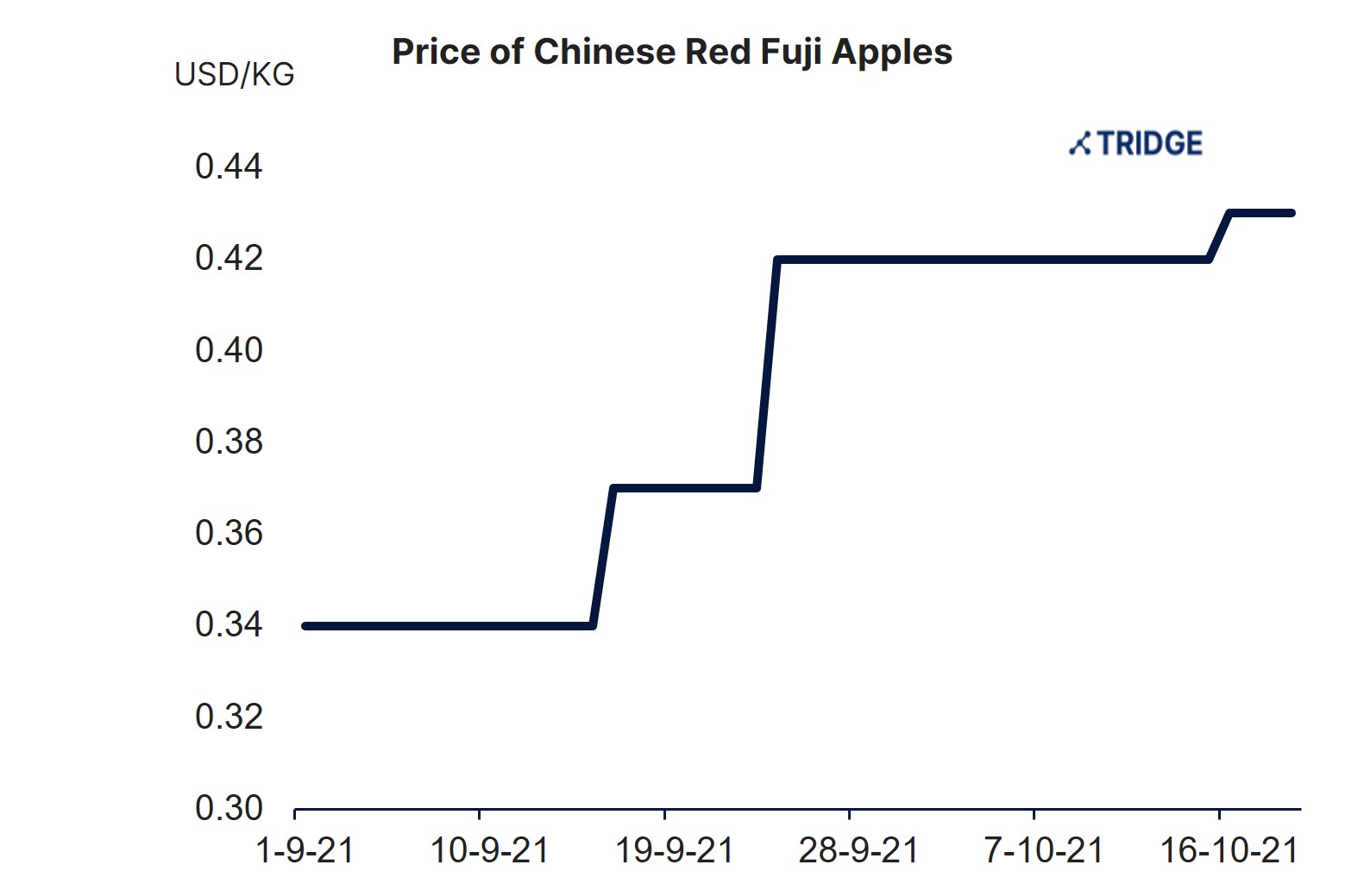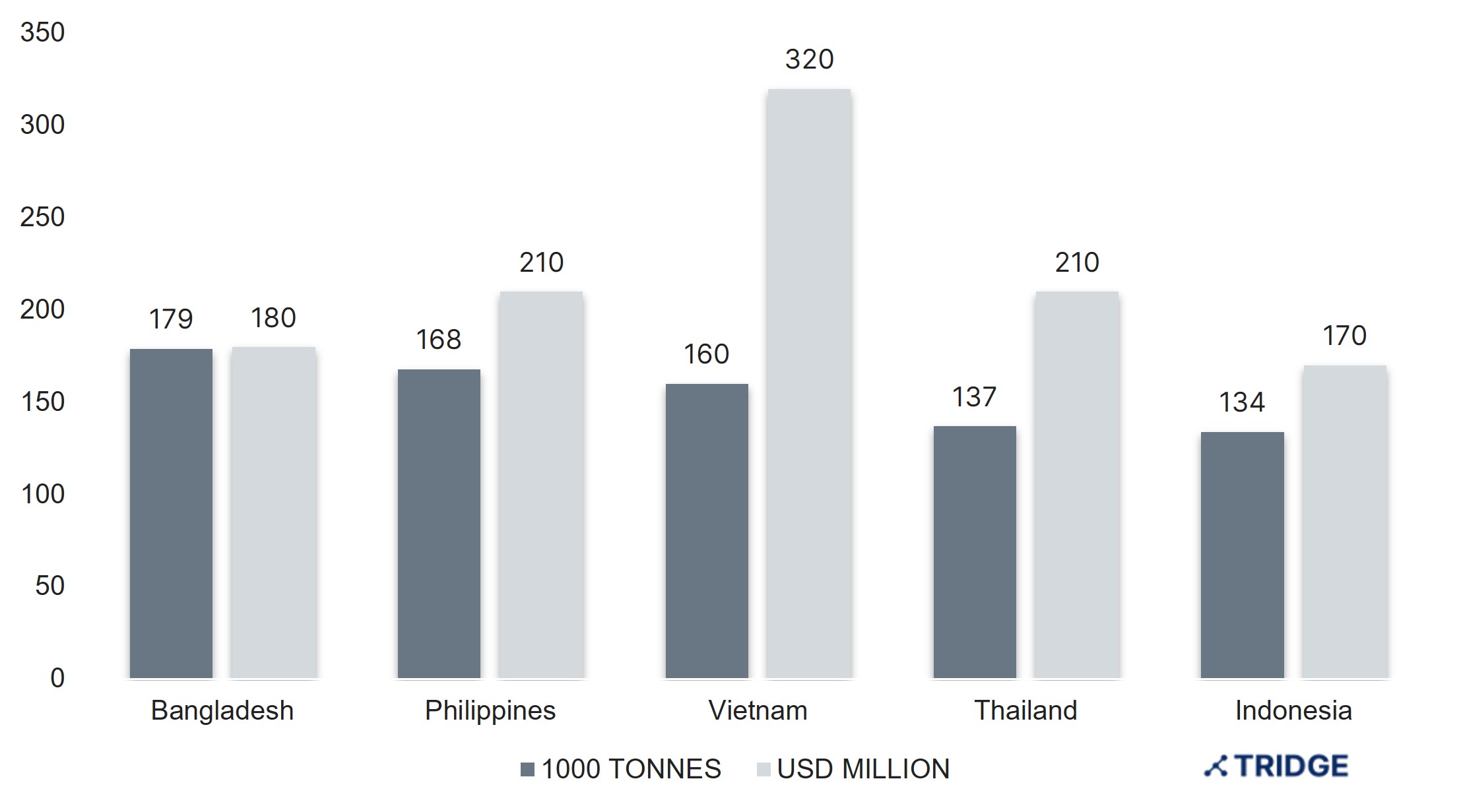Chinese Red Fuji Apple Production Impacted by Harsh Weather
Poor weather conditions affect Chinese apple production
On September 20th, the Shaanxi province of Northern China experienced a heavy hailstorm. Shaanxi’s main cash crop is apples with an annual production of 3.7 million Tonnes (2020). The production area in the northern part of the province, surrounding the city of Yan’an, is China’s greatest and accounts for 1/9th of China’s total apple production and 1/20th of global apple production. According to local media, the storm, with hails slightly larger than the size of grapes, lasted more than 10 minutes and left the nearly ripe Red Fuji apples’ surfaces greatly damaged.
Following September's hailstorm in Shaanxi, the Shandong province, another main production area of Chinese Red Fuji apples, was hit by a similar hailstorm on October 1st. Unfavorable weather conditions, combined with a generally rain-filled autumn that has slowed down the coloring process and the recent hailstorms delaying the harvest by one week, are bad news for local producers. The slow coloring process will negatively impact the volume of high-quality apples, leading to larger quantities of average quality on the market. The negative effects of heavy rain and hailstorms follows a slow year for Shaanxi Fuji apple producers, as the province’s cold-storage reserves of last season’s harvest was not emptied until early September.
However, in week 40 and 41, Shandong apple producers have been blessed with more favorable weather including many hours of sun, that will help the coloring process in the final weeks before harvest.
Market disturbances and price changes
The scope of the damages caused by the hailstorm and heavy rainfall are not yet fully known but will likely lead to market disturbances. Looking at the price trends of Chinese Red Fuji apples in September and October 2021, Grade 1 apples (highest quality) increased by US 3.1 cents/kg (+9.09%) on 16th September and further US 4.7 cents/kg (+12.5%) on September 24th immediately following the hailstorm in Shanxii. More recently, on October 13th the price increased once again to USD 0.43 cents/kg (+3.7%).

CNY to USD: 0.1550, avg. for rate for Sep 1st. - Oct. 14th.
It is expected that the price of high-quality Red Fuji apples will climb further given the reduced quantity available, although any definitive conclusion must await the outcome of the harvest at the end of October. An indication that the market expects a price increase is that the Chinese Apple Future Index has increased 30% since September 10th 2021.
China - a key player on the global fresh apple market
China holds a key role in the global fresh apple market with more than 50% of the global apple production volume and 21% share of global export. The production area dedicated to apple orchards within China have increased in recent years, leading to an excess supply of apples to both the domestic and global market. Moreover, a staggering 65 % of Chinese apples are of the same variety, Red Fuji apples, that are historically favored by the domestic market for its sweet taste.
Despite more than 95% of the Chinese apples being consumed domestically, China ranks number 1 globally in apple export volumes. According to data from China’s General Administration of Customs, China’s main export market for fresh apples in 2020 were:

Cumulatively, these five export markets accounted for 73% of Chinese fresh apple exports by volume. All five countries are characterized by their short distance to China, suggesting a heavy reliance on border and short-distance maritime trade.
Tridge’s engagement manager in China reports that the expectations in China are that the volume of Grade 1 Red Fuji apples are likely to decrease relative to previous years, while Grade 2 and 3 volumes are set to increase. If the expectations hold true, the Southeast Asian markets can expect to face lower import prices for quality grade 2 and 3 Red Fuji apples from China in the market year 2022 running from November 2021 to September 2022. Meanwhile, Tridge’s engagement manager in Indonesia report no sign of price changes yet, as most Indonesian importers have reached their 2021 quota limits, which are set by the Ministry of Trade in order to protect domestic producers.
Sources
Tridge Local insight (Oct. 9th. 2021)
Chinese apples struggle in export market, while the import apple market continues to flourish
China's apple exports increase by 9% in 2020, returning to 1 million tons
Hail in Shaanxi Apple Production Area, Apple Futures Daily Limit
Awful! The largest producing area was hit by hail suddenly, and the price of apples will be...
GF Futures: Hail and rainy weather affect the quality of apples and the tree-planting time




